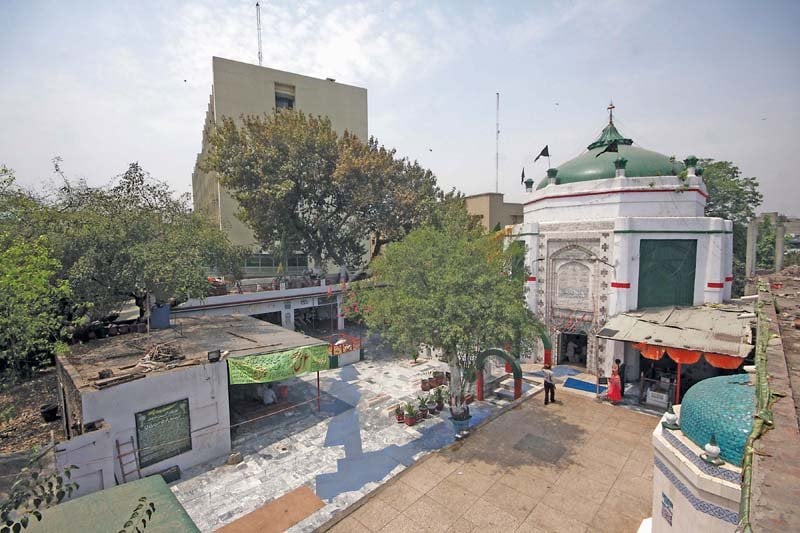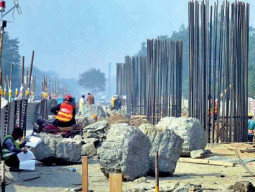
LAHORE: The shrines of Mauj Darya and his wife Bibi Kalan, dating back to the Mughal era, will be affected by the construction of the Orange Line Metro Train project.
The train’s underground track is set to touch the eastern walls of both shrines. The shrine of Mauj Darya, built in 1591 during the reign of Emperor Akbar, is situated on Edward Road. Bibi Kalan’s shrine is located behind Kapurthala House.
The shrine of Mauj Darya comes under the Auqaf Department. On March 24, 2016, the department issued an NoC with regard to the utilisation of its land. In the certificate, the department has mentioned that scant piling method would be applied to secure the existing structure and graves. “In the unlikely event of any damage to the main building or adjacent properties, the executing agency shall restore them to their original condition, the NOC reads.
LDA Deputy Director Muhammad Asad told The Express Tribune that no construction was being carried out within 200 feet of historical sites in accordance with an LHC order. He said it would be ensured that no damage was done to the Mauj Darya shrine. Following the construction of the track, Asad said, the shrine’s land would be returned following the completion of any restoration work. He said the shrine of Bibi Kalan would not be affected by the project. Asad said only a small piece of its land would be utilised in connection with the project.
In 1567, a barefoot Akbar had approached Mauj Darya after repeatedly failing to take Chittorgrah from the Rajputs. It is said that the emperor conquered the fort with the saint’s blessings. Mauj Darya died in 1604. Maharaja Ranjit Singh had earmarked Rs40 per month for his shrine’s upkeep. Secondary buildings were built in the shrine’s vicinity in 1837. Barrister Zargham Lukhesar, who moved the LHC to ensure that no construction activity was carried out within a 200-feet-radius of the shrine, told The Express Tribune that the Punjab Special Premises (Preservation) Ordinance 1985 and The Antiquities Act 1975 protected all sites 75 years or older. He said such buildings were the nation’s heritage and could not be harmed in the name of development initiatives. Lukhesar said he would continue to strive to secure such sites.
He said the shrine of Mauj Darya was the oldest among all heritage buildings falling along the route of the OLMT. Lukhesar said the LHC had stayed construction activity in the shrine’s vicinity on the occasion of the saint’s urs. This, he said, was nothing short of a miracle.
Published in The Express Tribune, May 11th, 2016.





































1713525343-0/WhatsApp-Image-2024-04-19-at-4-09-16-PM-(1)1713525343-0-270x192.webp)
1713525453-0/Henry-Cavill-in-James-Bond-(AI)1713525453-0-270x192.webp)

















COMMENTS
Comments are moderated and generally will be posted if they are on-topic and not abusive.
For more information, please see our Comments FAQ